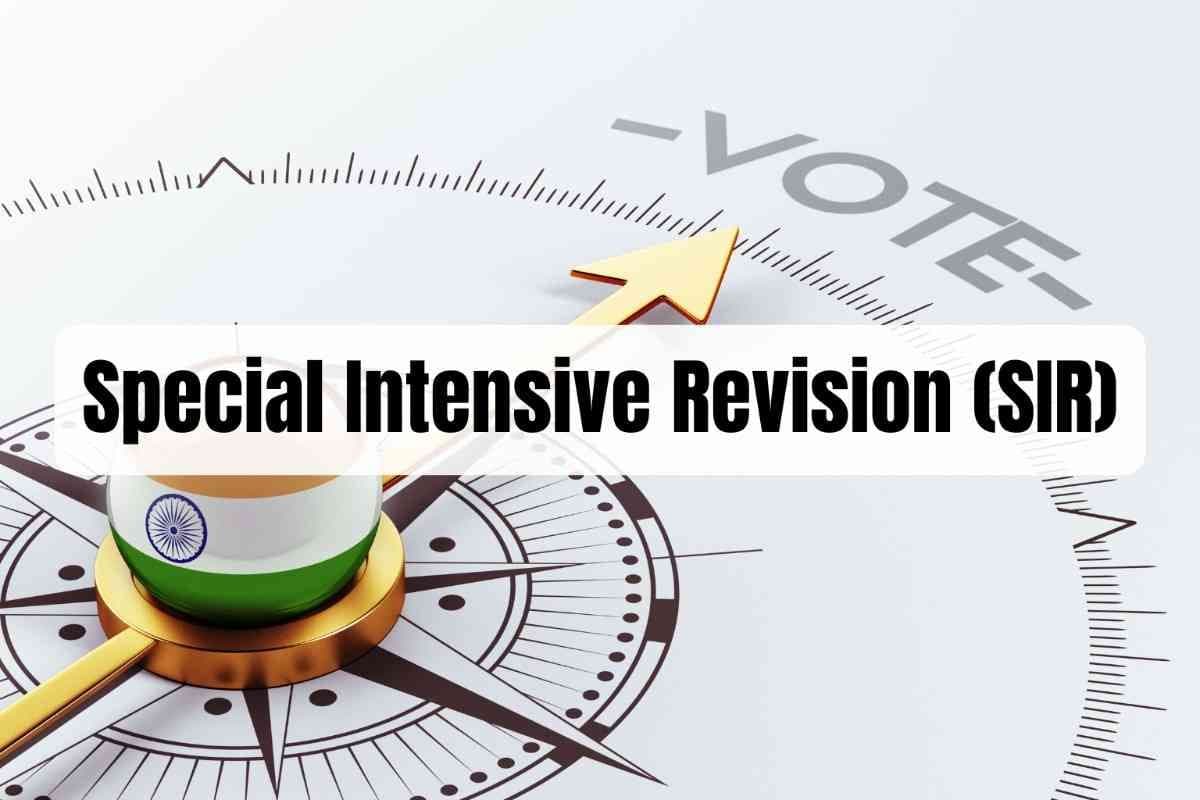India's Critical Minerals Roadmap
Mar, 2025
•10 min read
Why in News?
China’s strategic control over critical minerals essential for high-tech industries has intensified global economic and geopolitical tensions, highlighting the need for India to enhance its domestic capabilities and secure supply chains.
Introduction
Critical minerals are indispensable for economic growth, technological advancement, and national security, forming the backbone of future global economies. With increasing global demand, driven by renewable energy technologies and advanced industrial applications, securing these minerals has become vital for India’s green energy transition and strategic autonomy. Despite reforms like the Mines and Minerals Amendment Act, systemic challenges in exploration, processing, and global competition hinder progress in critical minerals in India.
The rising significance of critical minerals lies in their indispensable role in modern technology and sustainable development. Their strategic importance cannot be overstated, as they are integral to India’s plans for industrial growth, renewable energy expansion, and achieving long-term self-reliance. Addressing the challenges of availability and dependency is crucial for unlocking the full potential of these resources and securing India’s position in the global arena.
What are Critical Minerals?
- What are critical minerals?
- These are resources essential for economic development and national security.
- They are characterized by limited availability, geographic concentration, or high demand, which makes their supply chains vulnerable to disruptions.
- These are resources essential for economic development and national security.

- Global Significance: Minerals like lithium, cobalt, graphite, and rare earth elements are the backbone of high-tech sectors. They are indispensable for renewable energy technologies, electric vehicles (EVs), aerospace, telecommunications, and defense. They also underpin global efforts to transition toward Net Zero commitments.

- India’s Identification: Recognizing the importance of these resources, the Government of India has identified 30 critical minerals, including lithium, cobalt, titanium, nickel, and vanadium. These minerals have been prioritized based on their availability, role in future technologies, and India’s current reliance on imports.
- The following are the 30 critical minerals in India - Antimony, Beryllium, Bismuth, Cobalt, Copper, Gallium, Germanium, Graphite, Hafnium, Indium, Lithium, Molybdenum, Niobium, Nickel, Phosphorous, Potash, Platinum Group Elements (PGE), Rare Earth Elements (REE) Rhenium, Silicon, Strontium, Tantalum, Tellurium, Tin, Titanium, Tungsten, Vanadium, Zirconium, Selenium, and Cadmium.
The identification and categorization of these minerals reflect India’s strategic focus on reducing import dependency while securing the resources necessary for its industrial and technological growth.
Role of Critical Minerals in India’s Economic Transformation
Driving Green Energy Transition
- The discovery of 5.9 million tonnes of lithium reserves in Jammu & Kashmir underscores the importance of critical minerals in India. Lithium, cobalt, and graphite are essential for renewable energy systems like lithium-ion batteries, solar panels, and wind turbines.
- With India’s ambitious renewable energy target of 500 GW by 2030, the demand for these minerals is set to rise exponentially.
- The World Bank projects a 500% increase in demand for minerals like lithium and cobalt by 2050, emphasizing their role in the global energy transition.
Enhancing Strategic Autonomy
- India’s reliance on China, which controls 90% of global rare earth processing, poses significant strategic risks. By expanding domestic capabilities in mining and processing critical minerals for India, the country can reduce its dependence on external sources.
- This autonomy is crucial for bolstering national security sectors, including aerospace, defense, and semiconductors.
Accelerating the Electric Vehicle (EV) Ecosystem
- India’s EV market, projected to grow at a 49% CAGR by 2030, relies heavily on affordable and accessible battery production. Critical minerals like lithium and nickel are essential for this ecosystem.
- Domestic mining and processing can reduce costs, making EVs more affordable and accessible. This aligns with India’s goal of achieving 30% EV penetration by 2030.
Supporting Semiconductor and High-Tech Manufacturing
- Rare minerals like gallium, germanium, and indium are pivotal for semiconductor manufacturing. With India’s $10 billion semiconductor initiative, these minerals play a critical role in achieving self-reliance in high-tech manufacturing.
- A robust base of critical minerals for India can propel the country toward becoming a global hub for electronics and advanced technology.
Boosting Economic Growth and Employment
- Mining and processing critical minerals can drive economic growth by creating industrial ecosystems and generating employment.
- Policies promoting private sector participation in mining aim to attract foreign investment, further boosting GDP growth.
Strengthening Global Trade Position
- By leveraging domestic reserves, India can diversify its trade portfolio and reduce its trade deficit.
- Strategic partnerships, such as the Critical Minerals Investment Partnership with Australia, strengthen India’s position in global supply chains.
Fostering Technological Innovation
- Critical minerals are the foundation of next-generation technologies, including AI, robotics, and space exploration.
- India’s space programs, like Chandrayaan-3, depend on beryllium, tungsten, and rare earth elements, highlighting their importance for national pride and scientific advancements.
Securing Energy Storage Needs
- Minerals like vanadium and graphite are indispensable for energy storage solutions, which are critical for grid stability in renewable energy systems.
- India’s renewable energy targets hinge on reliable energy storage, making these minerals vital for the country’s green energy ambitions.

Read More About: Mines and Minerals (Development and Regulation) Amendment Act, 2023
Challenges in India's Critical Minerals Sector
Overdependence on Imports
- India imports 100% of its germanium needs and sources 60% of its rare earth elements from China.
- Such high dependence exposes the country to supply chain vulnerabilities and price volatility, threatening its long-term goals for critical minerals in India.

Limited Domestic Exploration and Mining
- Outdated exploration techniques and inadequate geological surveys have deterred investments in mining.
- Despite recent reforms, only 48% of auctioned mineral blocks have been sold due to poor exploration data.
Underdeveloped Processing Infrastructure
- While India has mineral reserves, the lack of processing capabilities forces the country to rely on imports for value addition. For example, lithium reserves in Jammu & Kashmir require advanced refining technologies.
Policy and Regulatory Gaps
- The Mines and Minerals (Development and Regulation) Act of 2023 has faced delays in implementation, limiting its impact.
- The absence of fiscal incentives discourages private and foreign participation in the critical minerals sector.
Global Competition and Geopolitical Risks
- Nations like China secure global mineral resources through exclusive agreements under initiatives like the Belt and Road Initiative (BRI).
- India’s KABIL has achieved limited success in acquiring critical minerals abroad, highlighting the need for stronger diplomatic efforts.
Environmental and Social Concerns
- Mining activities in ecologically sensitive areas, such as Jammu & Kashmir and the Northeast, raise environmental sustainability concerns.
- Poorly managed mining operations have led to environmental degradation and social discontent in some regions.
High Upfront Costs
- Exploration to production of critical minerals can take 10–15 years, making it a capital-intensive process that discourages private sector participation.
Weak Recycling Framework
- India’s recycling capacity for e-waste and industrial scrap remains underdeveloped, leading to a loss of valuable critical minerals that could otherwise be recovered.

Measures to Secure Supply Chains and Boost Processing Capabilities
Establishing a Centralized National Authority
- A unified body, like the proposed Center of Excellence for Critical Minerals (CECM), can streamline efforts in exploration, processing, and policy formulation.
Creating Strategic Stockpiles
- Developing reserves for high-priority minerals can help mitigate supply disruptions during global crises.
Fiscal Incentives for the Private Sector
- Subsidies, tax rebates, and low-interest loans can encourage private investments in exploration and processing.
Strengthening Public-Private Partnerships (PPP)
- Collaborative frameworks with global mining and processing leaders can bring advanced technologies to India.
Expanding Mineral Diplomacy
- Strengthening alliances like the Mineral Security Partnership and signing bilateral agreements can secure access to critical minerals.
Encouraging Domestic Manufacturing
- Extending production-linked incentives (PLI) for EV batteries, semiconductors, and solar panels can boost domestic production.
Promoting a Circular Economy
- Investing in advanced recycling technologies and formalizing e-waste recycling hubs can recover critical minerals sustainably.
Focusing on Research and Development
- AI-driven exploration and advanced processing technologies can make India self-reliant in critical minerals.

Conclusion
Critical minerals are central to India’s green energy transition, technological advancements, and strategic autonomy. Addressing gaps in exploration, processing, and recycling while leveraging global partnerships is essential for reducing import dependency. By adopting sustainable practices, fostering innovation, and strengthening policy frameworks, critical minerals in India can serve as a cornerstone of the country’s industrial and economic future. This integrated approach will ensure India’s emergence as a global leader in high-tech manufacturing and renewable energy.
Frequently Asked Questions (FAQs)
What are rare earth elements?
Rare Earth Elements (REEs) are a group of 17 metallic elements, including 15 lanthanides, scandium, and yttrium. They are essential for high-tech applications like electronics, defense, and renewable energy.


Who is responsible for the extraction of rare earth elements in India?
In India, Indian Rare Earths Limited (IREL), under the Department of Atomic Energy, is primarily responsible for the mining and processing of rare earth elements, which are all metals.
How many types of rare earth elements are there?
Rare earth elements are metallic and categorized into two types:
Light Rare Earth Elements (LREEs) – e.g., Neodymium, Lanthanum
Heavy Rare Earth Elements (HREEs) – e.g., Dysprosium, Terbium
How are critical minerals and rare earth elements different from each other?
Critical minerals are essential for economic and strategic needs, with supply risks (e.g., lithium, cobalt). Many are metals, but some (like graphite and phosphorus) are non-metals. Rare earth elements, however, are a subset of critical minerals and are exclusively metals, mainly used in high-tech applications but challenging to extract and refine. Not all critical minerals are REEs, but all REEs are critical minerals.
Prelims PYQs
With reference to India, consider the following statements: (2022)
- Monazite is a source of rare earths.
- Monazite contains thorium.
- Monazite occurs naturally in the entire Indian coastal sands in India.
- In India, Government bodies only can process or export monazite.”
Which of the statements given above are correct?
A. 1, 2 and 3 only
B. 1, 2 and 4 only
C. 3 and 4 only
D. 1, 2, 3 and 4

Related Blogs
![Vijay Diwas 2025: Why 16 December is Celebrated [UPSC Current Affairs]](/_next/image?url=https%3A%2F%2Fblog-media.superkalam.com%2FVijay_Diwas_2631842d69.jpeg&w=3840&q=75)
Vijay Diwas 2025: Why 16 December is Celebrated [UPSC Current Affairs]
Dec, 2025
•6 min read

Special Intensive Revision (SIR) of Electoral Rolls: Definition, Objectives, Significance, & Challenges
Dec, 2025
•4 min read

UNICEF Day 2025: 79 Years of Global Commitment to Child Rights & Protection
Dec, 2025
•4 min read